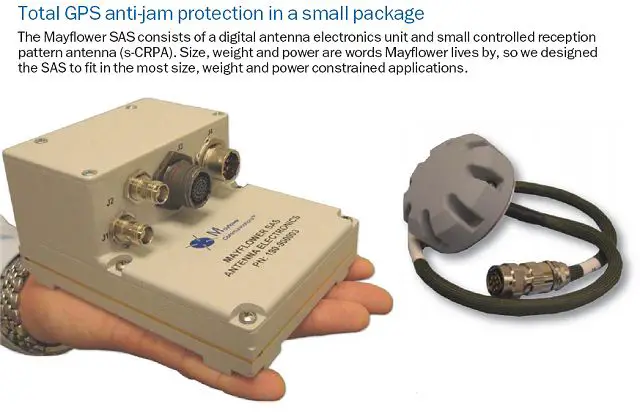| a | |||
 |
|||
Online
Show Daily News AUSA 2012 Association of the United States Army AUSA Annual Meeting & Exposition 22 to 24 October 2012 Washington D.C., United States |
|||
BAE Systems Anti-Jam GPS Antennas at AUSA 2012 |
|||
| Thursday, October 18, 2012, 04:58 AM | |||
| BAE Systems Anti-Jam GPS antennas SAS for a broad array of platforms at AUSA 2012. | |||
GPS
jammers are readily available and capable of overpowering satellite signals,
leaving your forces blind and vulnerable. BAE Systems and Mayflower Communications
have combined their excellence in adaptive antenna electronics and antenna
design into a small, flexible and robust GPS anti-jam antenna called Small
Antenna System (SAS). SAS provides cost effective anti-jamming capability
for a broad array of platforms including rotary wing, maritime and ground
combat vehicles. |
|||
 BAE Systems and Mayflower Communications have combined their excellence in adaptive antenna electronics and antenna design into a small, flexible and robust GPS anti-jam antenna called Small Antenna System (SAS). |
|||
Originally
developed for UH-60 and AH-64 helicopters, its small size and rich feature
set make it useful across a broad array of platforms. |
BAE Systems Anti-Jam GPS antennas for a broad array of platforms at AUSA 2012 1810124
- Posted On














